
How to Track Feature Requests in Trello
Features are the foundation of a well build product. If you build a feature without talking to your customers, chances are you'll build the wrong things, that won't move the needle –– no matter how hard you try.
That's why we wrote this beginner's guide.
Building wrong features that nobody uses can be a very expensive mistake. Unfortunately, it's one of the biggest problems you'll have to tackle as a product owner.
Fortunately, there's a predictable way to understand your customers more deeply. Identify their needs and problems and prioritize the features without any guesswork.
This article will teach you how to track, manage, and prioritize customer feature requests to grow your product and company. Let's get started.
What is a feature request?
Feature Requests are product ideas, feature suggestions, or enhancements (improvements) to the existing features in a product.
Feature requests or product suggestions are a communication channel between you, the product manager, and your customers. It means your customers care about the product and will invest the time to tell you what they think.
Why track feature requests?
Feature requests allow customers to tell you what they think your products should be doing but aren't. Tracking these requests provides insights into what customers want from the product and allows you to serve your customers better, saving time and money.
Despite our best efforts to develop products and services tailored for each customer, there will always be someone whose needs we can't provide. Some will be expressed explicitly as feature requests and some implicitly via email, support to sales and customer success teams.
Tracking and managing feature requests is essential to increasing transparency in the product development process. In addition, it helps product owners like yourself understand customers' needs to prioritize new features for future updates.
Employing a feature request tracking system also helps in answering questions often posed by your customers, like:
- How do you handle feature requests?
- How to raise a feature request?
- How do you request a feature?
- How do you ask a customer for a feature request?
How to track feature requests?
Feature request tracking & management is a five-step process that includes the:
- Asking for feedback or having a way to collect incoming feedback
- Organizing incoming feature requests from customers or stakeholders
- Analyzing and prioritizing feature requests
- Implementing and developing prioritized features and keeping customers in the loop who requested the feature
- Notify customers about feature releases and close the feedback loop
No matter which tool you choose, you should have a system that helps you perform all five necessary steps.
Let's see how we can do this with a free tool like Trello.
How to track feature requests using Trello?
Trello is a popular project management tool that helps companies organize and manage projects. Many organizations also use it to collect customer feedback, although it focuses on project management. Trello is a Kanban board and is free to use for basic functionality.
- Sign up or log into Trello. Create a new board called "Feature Requests for Your Company." Trello's team has also assembled a few ready-to-use templates for this use case.

2. Next, you'd want to make the board Public so everybody on the internet can view it. You can also invite users and customer-facing teams by sharing a link.

Aside: You'd want to centralize your feature requests, so if you collect feature requests from any other channels like emails, add them to the Trello board to ensure feature requests are in one place for your SaaS.
3. Create the following columns: Start here, Planned, Up Next, In Progress, and Done. This would easily communicate to customers what features have been requested, what you're currently working on, and what's coming next as well as an easy-to-understand process for the team to discuss, sort, and prioritize feature requests.
Under the Start here column, create a new card, "Suggest a New Feature," to help customers write their feature requests in the comments.

4. Encourage collaboration and team management by inviting customer-facing teams like sales, support, and the product team with the "invite teammates" feature. (Though you'd have to pay per teammate in Trello)
5. Once the comments start rolling in, you'd want to promote the comment into its card in one of the columns we created in step 3.
6. Enable your customers to vote on a feature request card using Power-Ups in Trello (they'd need a Trello account). Adding other Power-Ups cost more in Trello as they're unavailable on a free account.

7. Now, move each card as you progress on the task across the columns you created in step 3.
Why Trello might not be the best choice for tracking feature requests
Trello is flexible and free and works nicely when managing feature requests and customer feedback. As your team grows and your product scales, prioritizing features in Trello becomes tough.
It also gets progressively harder to sift through troves of feedback, can't upvote on behalf of your customers, and the price goes through the roof as you add new admins or Power-Ups, as Trello's pricing is not predictable at all.
It becomes challenging to identify who requested what, and communicating updates back to customers feels messed up, making the process very time-consuming.
Also, Trello provides no way to communicate with the team confidentially on particular feedback and discuss without losing the context.
All you have is a kanban style board, where users can add feature requests as comments that later need to be sorted into individual cards and can only be prioritized —all without a branded custom domain or access controls, which feels very tiring.
Trello is great but limiting in various ways.
Rapidr vs. Trello for tracking feature requests
We wanted a better system for capturing, organizing, and prioritizing feature requests that are user-friendly and cost-effective. We wanted a feature tracking system to do the following –
- Capture customer and internal feature requests in one organized place.
- Upvote and comment on existing feature requests without paying extra.
- Discuss and collaborate with teammates confidentially without losing context in the same place.
- Automatically update customers involved as the status of the feature requests changes.
- Vote on behalf of a customer on feature requests accumulated outside a Rapidr board.
- Create custom statuses for each specific feedback board.
- Invite teammates without paying any extra penny.
- Sort and filter to prioritize the most critical feature requests.
- See the voters list on a particular feature request
- Customize feedback portal and support branding with company logo and header image.
- Public product development Roadmap to inform the users about features progress.
- Product Changelog to inform users about product releases.
How to track feature requests in Rapidr?
Rapidr helps track feature requests and prioritize what to build next in a simple, intuitive, and easy-to-use interface. Here's how you can track feature requests:
1. Ask for user feedback
"Feedback is the breakfast of champions." - Ken Blanchard
Ensure your customers know you want to receive feature requests, especially how to send them your way. The easier you make it for your customers to share their ideas, the more data you collect, and the more your customers feel involved.
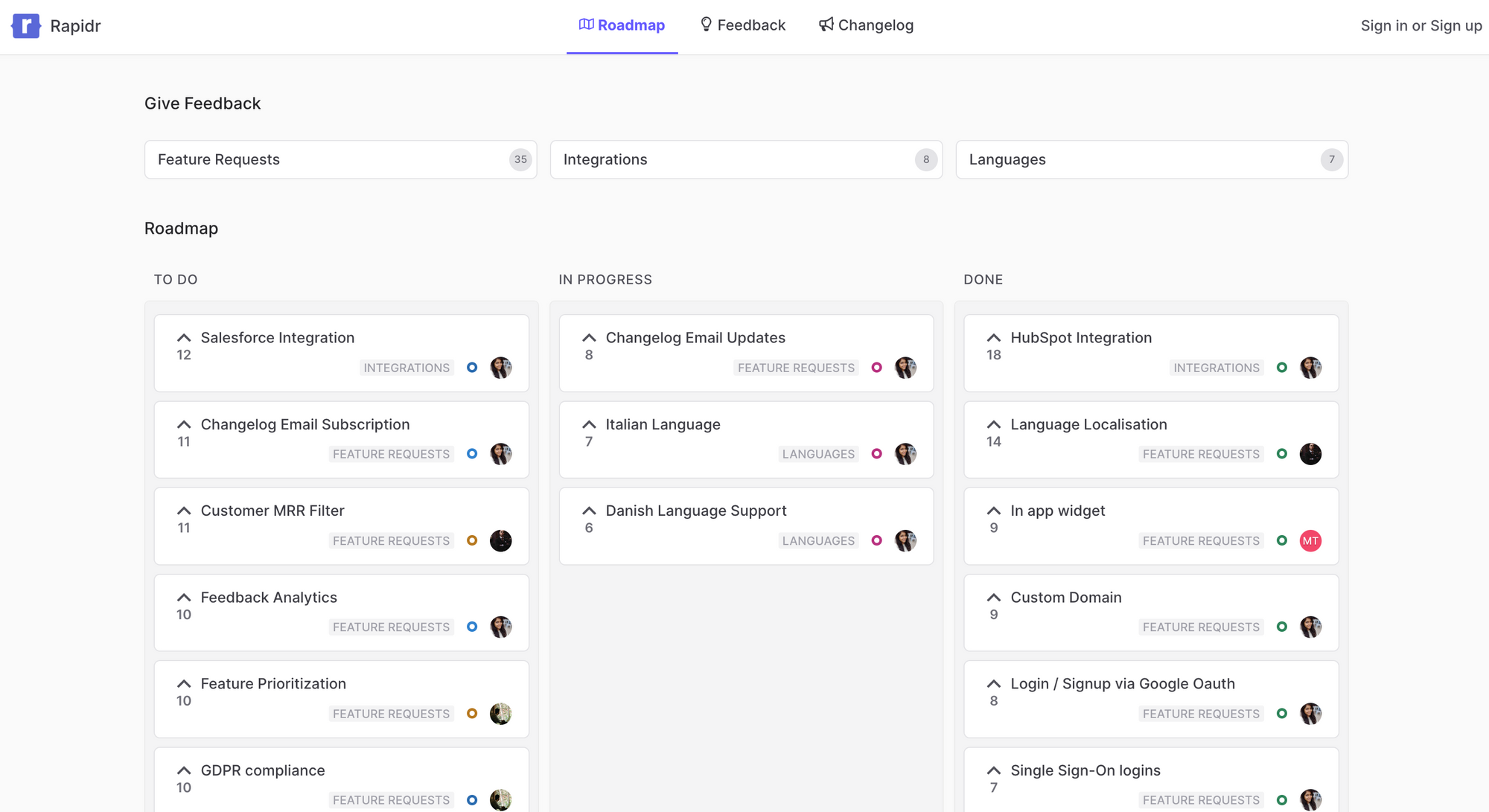
With Rapidr, you get a dedicated feedback portal that helps you keep all the customer feedback in one organized place. Set it up to run on a custom domain feedback.your_company.com just as easily. Just share the link to this portal in your app, and that's it. The setup rarely takes more than 5 minutes.
Like with Trello, you'd want to create a board where you can capture incoming feature requests. For that, create a Feature Requests board in Rapidr.

Aside: you can add an unlimited no of boards to track other types of feedback like bug reports, enhancements, integration requests, ideas, etc. Also, you can adjust the board's privacy from public to private to teammates only for collecting internal feedback; it's that easy.
2. Collect feature requests from customers and teammates
The motive is to gather and organize all the incoming feature requests from customers and teammates in one centralized place. This would help manage the requested features and track relevant information, such as who has asked for what, how many customers voted for a feature, and which feature has the most votes across different customer segments (cohorts).
Ideally, you'd want a place to aggregate similar feedback, brainstorm about it with users and the team, and notify your customers when those features are shipped.
The feedback board we created above is just that place. We crafted the user interface with utmost diligence to help your customers feel delightful every step of the way. Look at how one of our customers Defi Kingdoms, used Rapidr to create their feature request feedback portal.
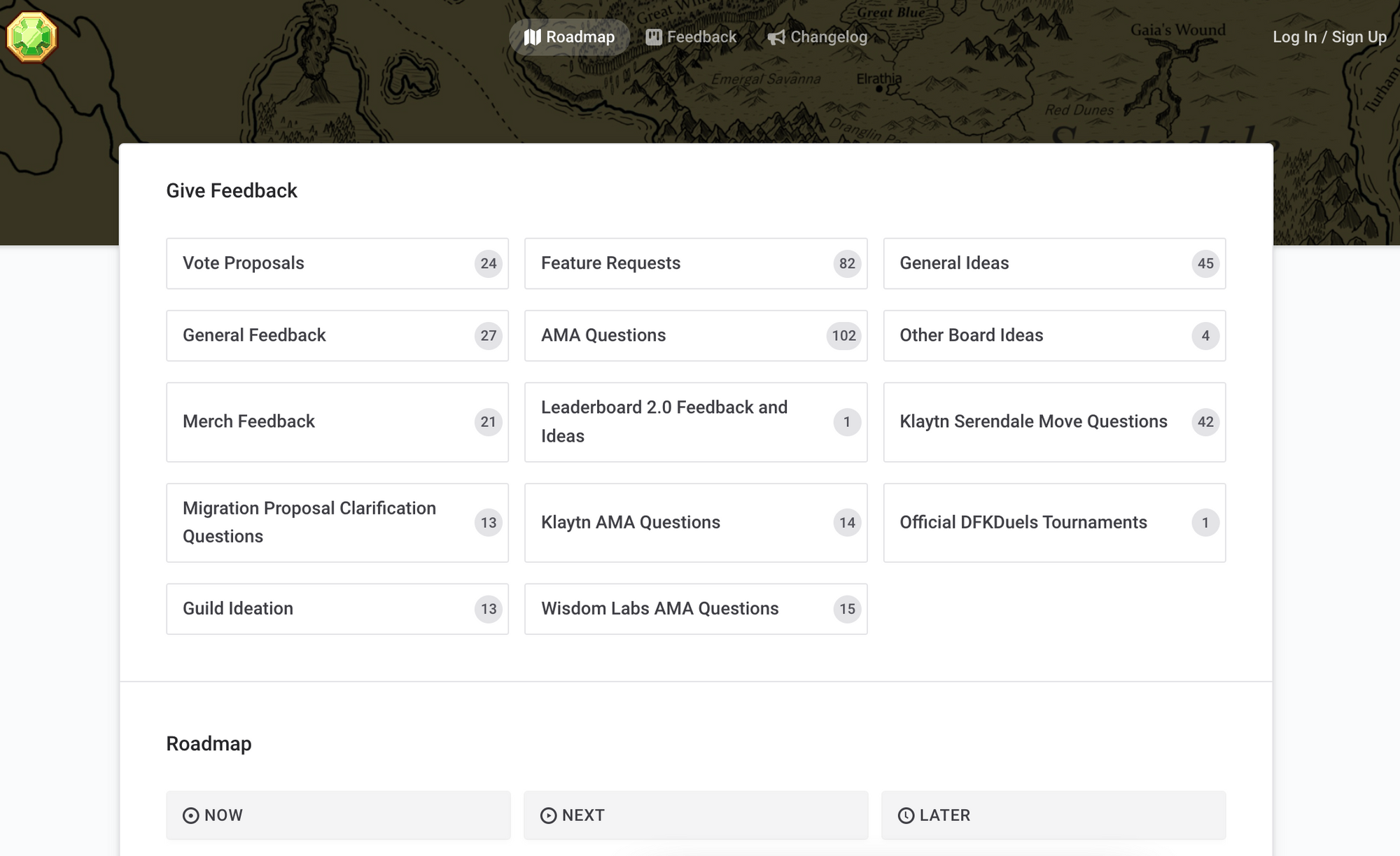
3. Analyze and prioritize feature requests
Reaching out to customers after they've given their feedback and collaborating with your teammates without losing context is often challenging. These workflows are super simple in Rapidr. You no longer need to jump from one tool to another to send a message.
You can loop in your teammates and ping them directly in the same thread without losing context with confidential comments.
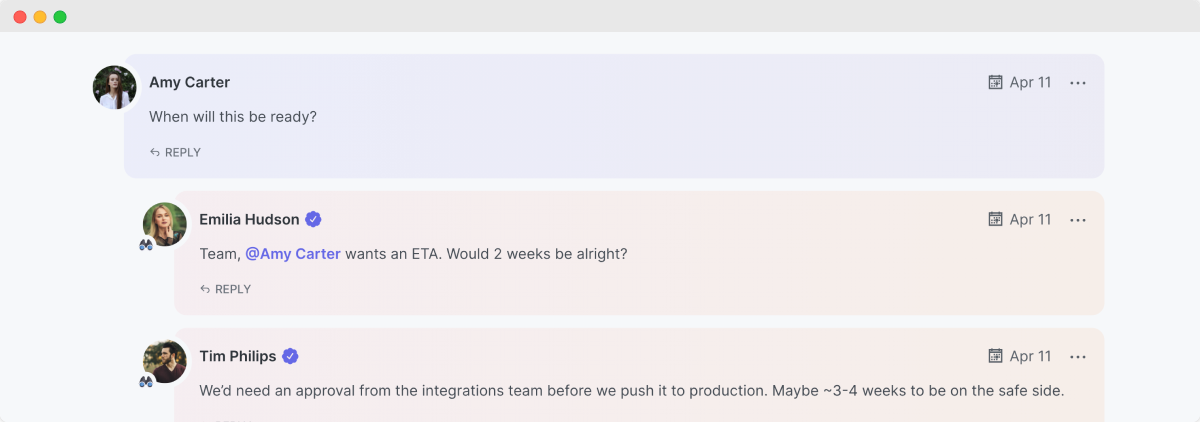
Onboard your team to create, discuss, and manage customer-raised feature requests and collect internal feedback without paying extra in Rapidr compared to Trello, where you must pay per seat(team member).

Teammates can also vote on behalf of customers who requested similar features in Rapidr, unlike Trello, where you can't keep a record of who requested what.
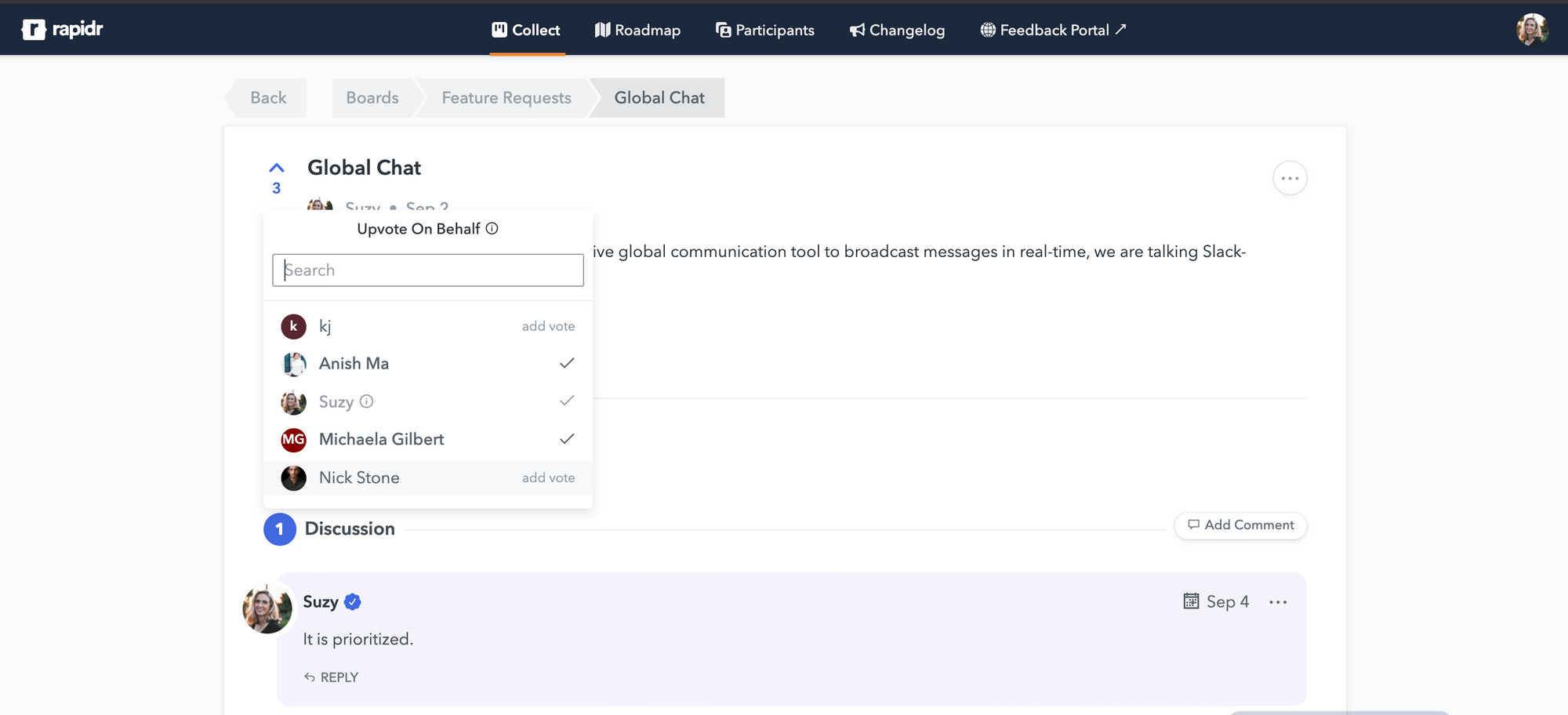
Once you have analyzed all the user requests, assign them statuses, such as In Progress, Under Consideration, Closed, etc., to indicate which workflow the respective feature request is in.
Rapidr also allows creating custom statuses for each board that makes sense for that feedback type and goes with the company language if the default statuses aren't enough.
Whenever you change a feature request's status, Rapidr automatically communicates that with your customers, saving you time and the back and forth.
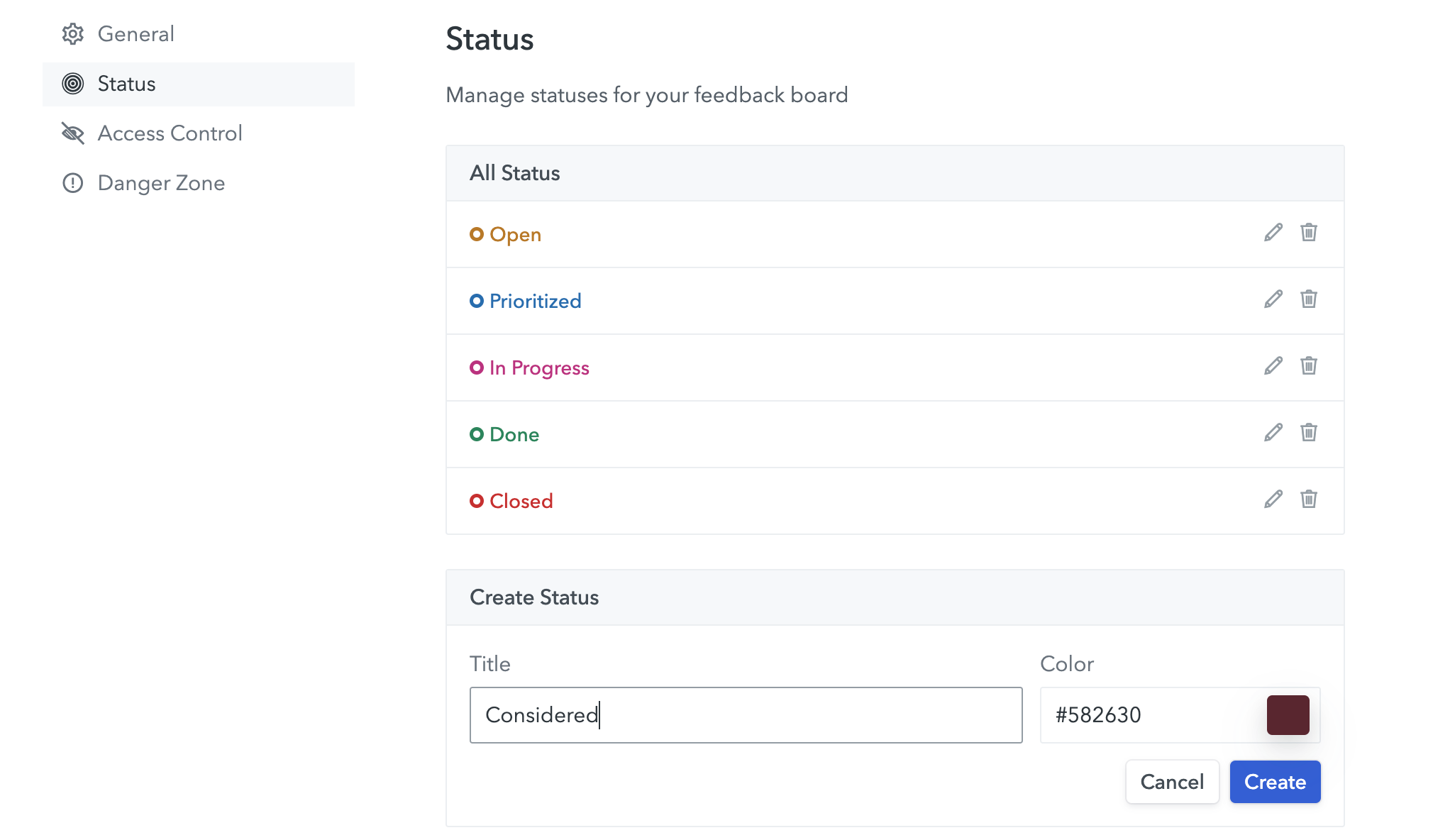
Furthermore, to give a quick birds-eye-view of what's under work, Rapidr creates a Public Roadmap automatically. Present all the feedback, not just feature requests, in a neat kanban layout.
Each column represents the feedback in that particular workflow. No need to go shopping for extra Roadmapping software; See how Lasso uses Rapidr to create a public product roadmap.
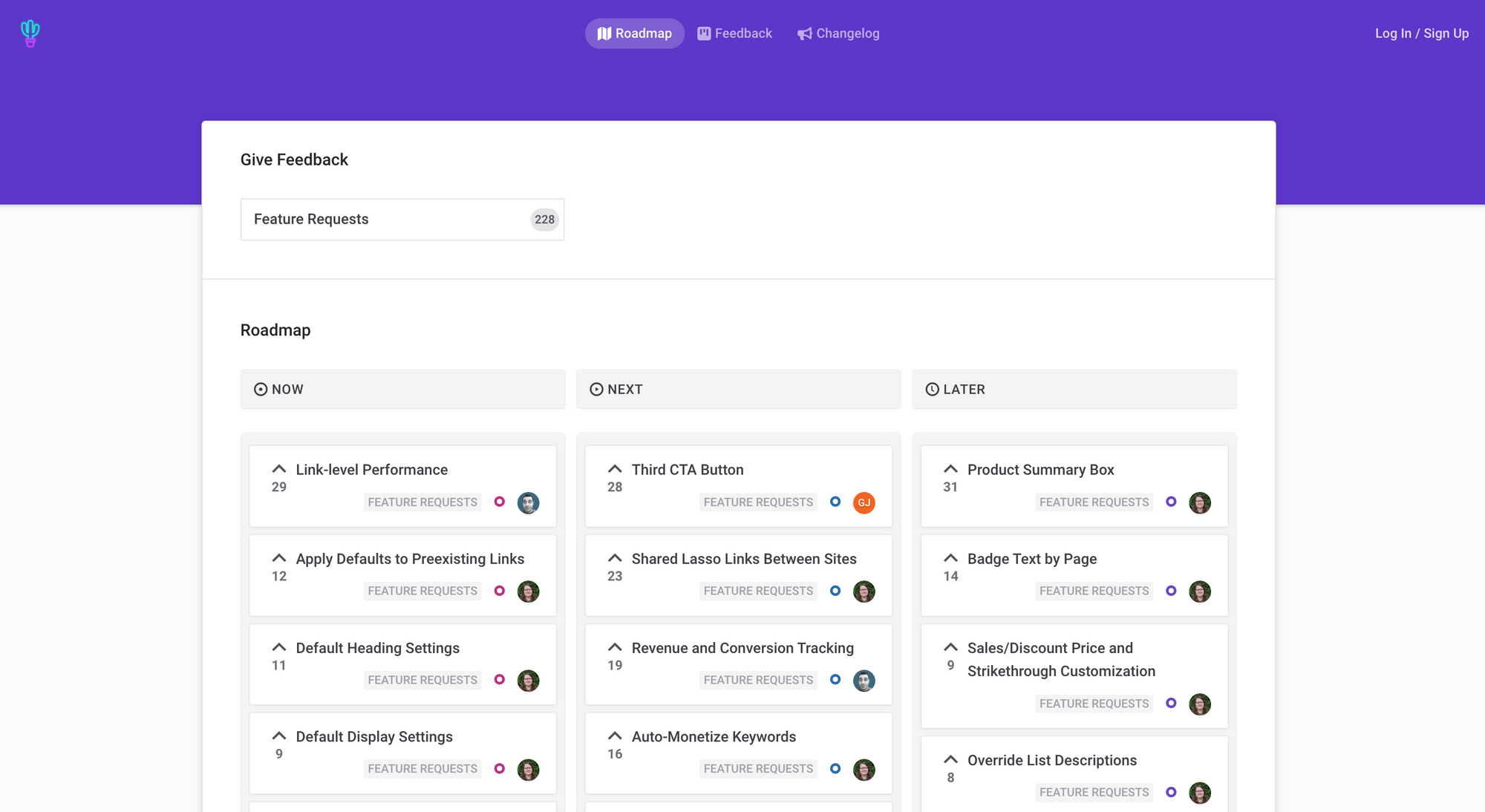
4. Implement and develop feature requests
Once prioritized, start working on those features with your team; you can ask for more information from users in the comments for detailed feedback on requests.
You can also connect the feature request entries with integrations like Jira or your project management software of choice (coming soon in Rapidr) to track progress with the developer and keep customers in the loop.
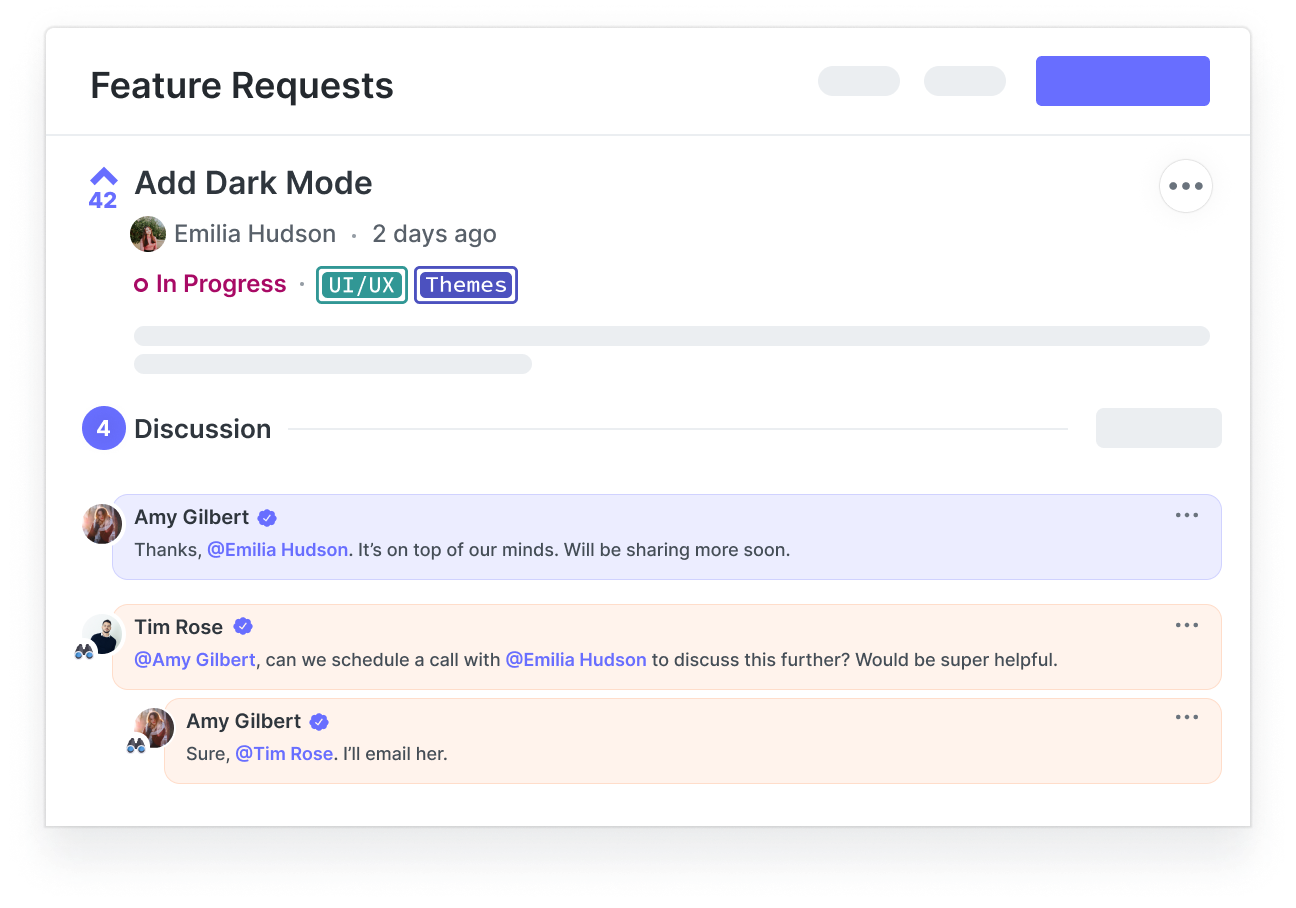
5. Notify users about feature releases
Whenever the status of a particular feature request changes, Rapidr automatically sends a custom-branded email to everyone involved, including all the commenters, all the voters, and the author of the feature request. Trello doesn't have any system to automate the notification system and announce releases with a product changelog.

Show users their opinions matter and are being heard with Rapidr to improve your product with their insights and close the feedback loop.

Rapidr's feature requests tracking system is simple for users and teammates to submit feature requests to make data-driven decisions—a solution transparent across all teams and customers.
Managing your feature requests on a robust feedback management tool like Rapidr will help you to:
- Consolidate all your feature requests into one organized place.
- Collect, manage, and prioritize product feature requests with confidence without any guesswork.
- Help retain and grow the customer base by listening to them and automatically keeping them in the loop about the progress.
- Feedback management is a team sport. Include your teammates without paying extra.
- Maintain a public roadmap to inform all stakeholders.
- Changelog to keep your customers updated on new features or product releases.
Rapidr offers an easy way to collect feature requests, prioritize, track, manage them, and engage users at a competitive price. We offer a 14-day free trial, so you can see if we're a good match: no credit card is required, and no obligations. Take Rapidr for a spin today.

